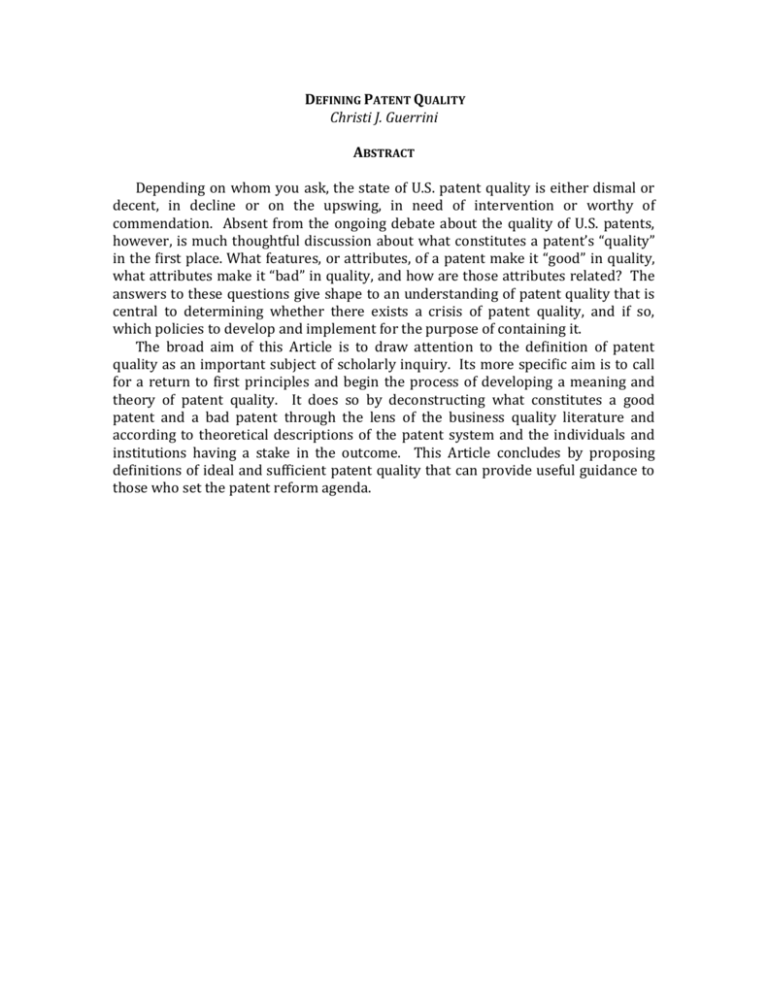Defining Patent Quality
advertisement

DEFINING PATENT QUALITY Christi J. Guerrini ABSTRACT Depending on whom you ask, the state of U.S. patent quality is either dismal or decent, in decline or on the upswing, in need of intervention or worthy of commendation. Absent from the ongoing debate about the quality of U.S. patents, however, is much thoughtful discussion about what constitutes a patent’s “quality” in the first place. What features, or attributes, of a patent make it “good” in quality, what attributes make it “bad” in quality, and how are those attributes related? The answers to these questions give shape to an understanding of patent quality that is central to determining whether there exists a crisis of patent quality, and if so, which policies to develop and implement for the purpose of containing it. The broad aim of this Article is to draw attention to the definition of patent quality as an important subject of scholarly inquiry. Its more specific aim is to call for a return to first principles and begin the process of developing a meaning and theory of patent quality. It does so by deconstructing what constitutes a good patent and a bad patent through the lens of the business quality literature and according to theoretical descriptions of the patent system and the individuals and institutions having a stake in the outcome. This Article concludes by proposing definitions of ideal and sufficient patent quality that can provide useful guidance to those who set the patent reform agenda.






